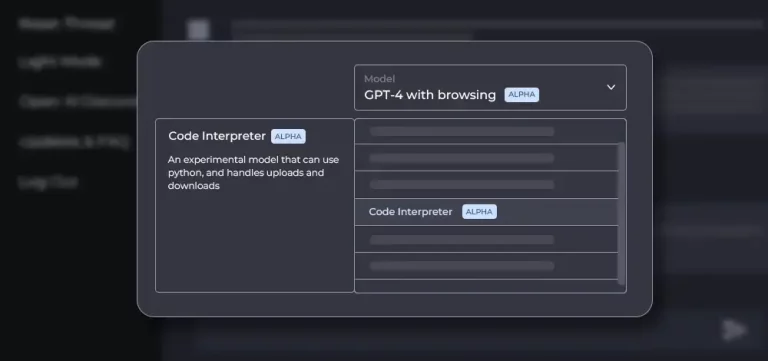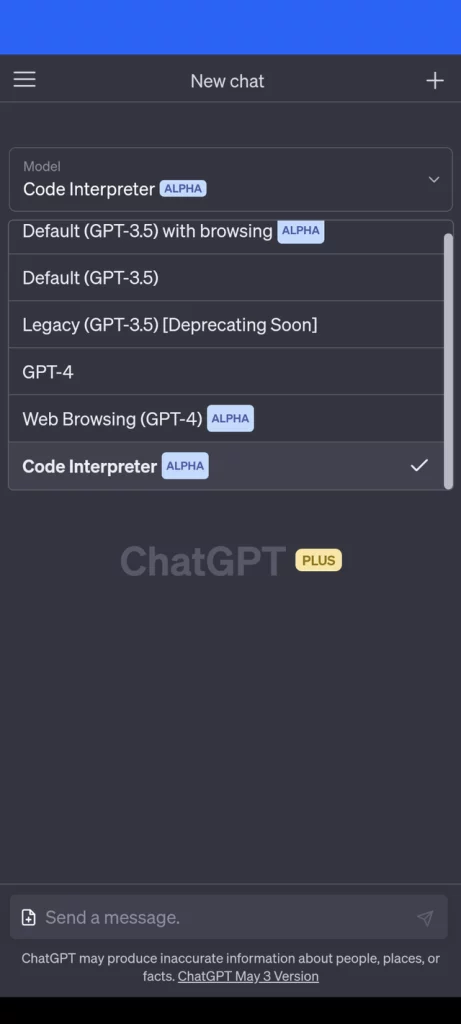
OpenAI's ChatGPT chatbot recently launched a new feature called Code Interpreter, which allows users to run Python code in the chat interface. The plugin opens up a range of exciting possibilities, such as data analysis, file manipulation, and visualization. But what exactly is Code Interpreter?What is it? In this short guide, we’ll explore what the ChatGPT code interpreter is, how to access it, and what it can be used for.
What is ChatGPT Code Interpreter?
The ChatGPT Code Interpreter is a plugin designed to enhance the functionality of ChatGPT by allowing users to execute Python code directly in the chatbot interface. In addition to code interpretation, it also has other features such as data analysis, file upload and download, and the ability to modify and improve the code. Users can provide specific instructions or leave them open-ended, allowing ChatGPT to extract relevant information from the data.
How to use ChatGPT code interpreter
To access the ChatGPT Code Explainer, you need to be a ChatGPT Plus subscriber. However, access to the Code Explainer add-on is gradually being rolled out to all ChatGPT Plus users.renew:OpenAI has made the Code Explainer plugin accessible to all ChatGPT Plus users starting July 6, 2023. If you are a ChatGPT Plus subscriber, you can enable the Code Explainer plugin by following these steps:
- Log in to the ChatGPT interface on the OpenAI website.
- Go to Settings.
- In the lower-left corner of the window, next to your login name, click the three-dot menu.
- Select the "Beta Features" menu and turn on "Plugins." You can also enable web browsing if you want.
- Close the menu and look for the small drop-down menu under Language Model Selector. Click on it.
- Select Add-on Store.
- Select All Plugins from the options.
- Search for the "Code Interpreter" plugin and click "Install".

Once installed, you will be able to interact with ChatGPT using the Code Interpreter plugin!
ChatGPT Code Interpreter Use Case
The Code Interpreter plugin can be used in many different ways, and more uses are being discovered all the time. OpenAI suggests it’s particularly useful for solving math problems, performing data analysis and visualization, and converting files between formats. Here are some examples of how some users have used the Code Interpreter plugin so far:
- File Upload and Download: The plugin allows you to upload files, extract information, and perform transformations. This has many use cases. For example, you can upload multiple image files to ChatGPT and ask it to identify similarities or trends such as color schemes, styles, etc.
- Data Visualization: ChatGPT Code Interpreter can visualize various types of data and even generate GIFs based on the visualization techniques you request.
- Data Management: Since the plugin allows you to upload CSV data, you can enter a lot of data in a single upload. This is very convenient for cleaning or filtering large amounts of data. For example, you can have a CSV file containing analytics reports for the past 3 months – Code Interpreter can be used to create easy-to-read tables or charts showing key metrics.
- File format conversion: One of the plugin’s standout features is the ability to quickly convert files to different formats. For example, you can convert multiple types of media files, which is very convenient for content creators. Want to convert a GIF to an MP4 or vice versa? Code Interpreter has you covered! One user even reported that it can edit and manipulate media, such as adding effects like zooms, entrance animations, and more.
While these are just a few examples, the possibilities are vast and can be tailored to your specific use case. We recommend trying enabling the Code Interpreter to see exactly what it can do. As mentioned above, users are discovering new uses for Code Interpreter and other ChatGPT plugins all the time, so it’s important to think outside the box sometimes!
ChatGPT's code interpreter opens up a range of possibilities for developers, hobbyists, and professionals alike. As OpenAI continues to roll out access to the plugin, we hope that more and more people will eventually have access to it and be able to try it out to find all sorts of wonderful use cases. As far as we know, OpenAI still does not allow multiple plugins to be enabled at the same time. Once this limitation is removed, we expect the code interpreter to be even more powerful!